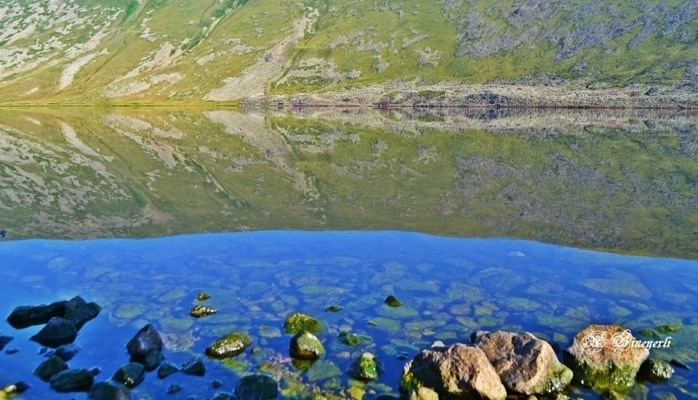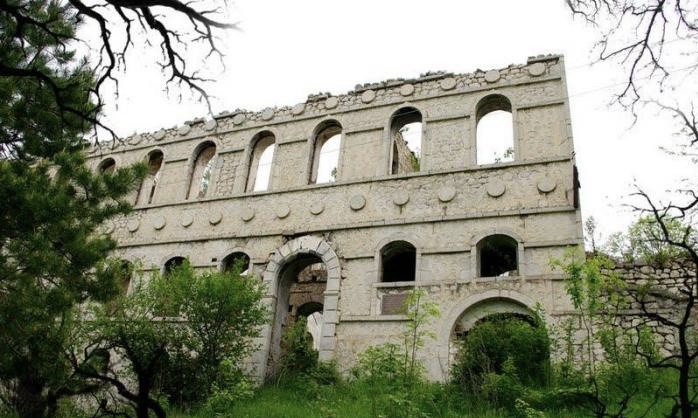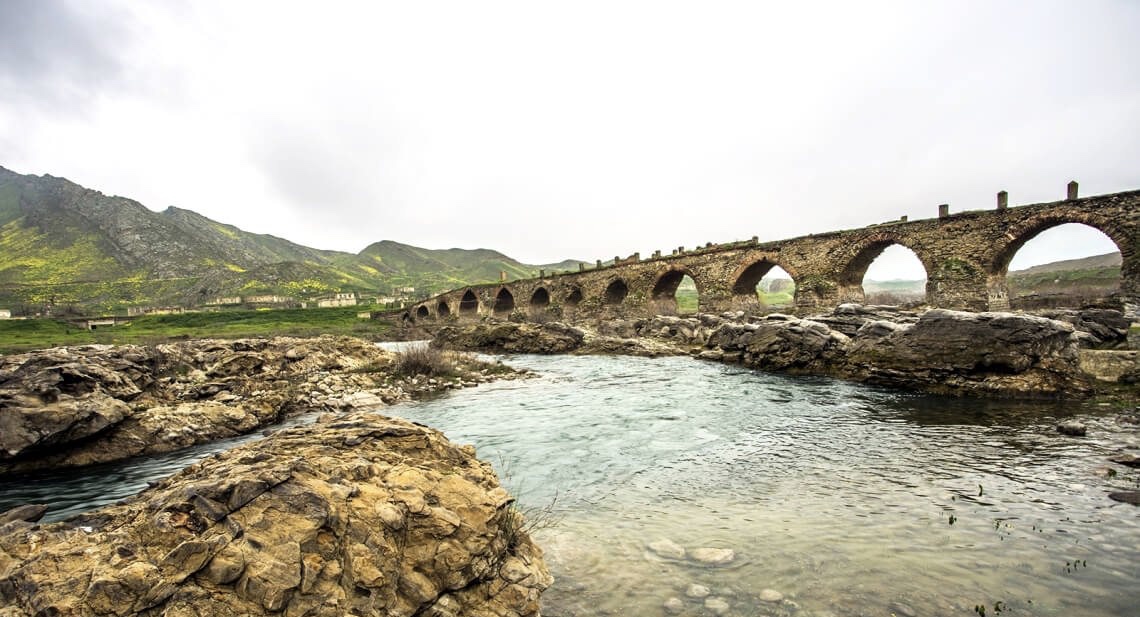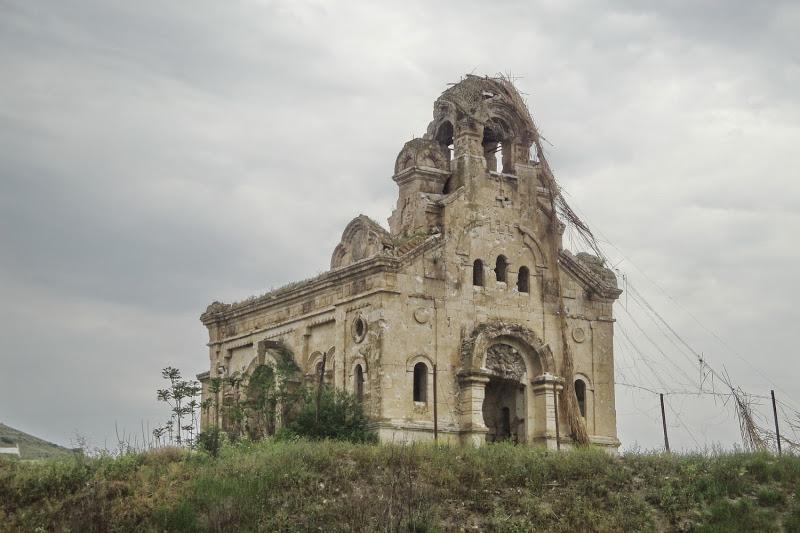






of







of







of





















Shahbulag Castle was built near the city of Aghdam in 1750-1752. Panahali khan, the founder of Karabakh Khanate, decided to build a firm fortress at a favorable place to be protected from the danger expected from the Iranian side. This fortress had to be the central fortress of the khanate as well. For this purpose, he selected an area with a spring at the bottoms of the mountains at a 10 kilometers distance from Agdam. The building of the Shahbulag fortress here was favorable in all aspects. The Shahbulag fortress has been surrounded by high walls. The khan’s residence was situated in an eight-towered castle. Panahali khan has lived here together with his family, relatives, kins, great masters, and scholars.
According to information from historians of Karabakh, the Shahbulag Castle complex was constructed by the order of Panahali Khan near a spring known as “Shahbulaghi” (“Shah’s Spring”) that located 10 kilometers away from Aghdam city. That is why the castle was named after the spring. The site, known as Shahbulag in the researches, was initially the internal castle of a large palace complex. The Khan’s palace headquarter was undoubtedly nearby. Castle is rectangular and has been built from unhewn stones. Its external walls are reinforced with circular and semicylinder towers. The Castle walls and towers finished with, typically for defense structures, embrasures and merlons getting as high as narrower. The walls are 7-meter high, and the height of the towers is 8.5 meters. Located in the middle of the eastern wall, the entry was protected with two-floor tower-like premises. The top room of the tower is likely to have been the Khan’s. A stone staircase rises from the castle yard to the room. The roofs of the one-floor line of rooms built along the walls inside the castle well played the defense role as a border. The rooms are covered with stone beams. Built from half-hewn whole stones, the Shahbulag Castle is one of the simplistic examples of Azerbaijan Khanates’ military architecture. Dwelling houses, a bath-house, a Mosque, and a market have been built inside of the Shahbulag Castle, but only the castle and the mosque have survived. Located in the castle’s North-West near a spring, the Mosque of the Castle consists of a small stone prayer hall and veranda. The prayer hall is covered with a square dome (5.1 × 5.1m). The Mosque entry opens into a quadrangular veranda of the East-oriented façade (5.1 × 2.5 m). The veranda beams, base, and capitals lean on quadrangular 8-edge pillars. The small volume of the Mosque is put on a high border. As researchers think, Shahbulag buildings influenced the architecture of Karabakh Khanate and especially the capital Shusha city.
Although the Shahbulag Castle was restored in 1985, after the occupation of the Aghdam district by the Armenian Armed Forces in 1993, it became one of the most Armenianized monuments of Azerbaijan. Later on, the Castle was restored and is used as a church.

Qaragol Interrepublics State Reserve was set up with the decision of the Council of Ministers dated November17, 1987. Garagol State …

The idea of establishing Aghdam Bread Museum, which is considered to be the second in the world after the Zurich …

The Khurshudbanu Natavan’s House is a historical and architectural monument of the 18th century located in the city of Shusha. …

Museum Mausoleum Complex of Molla Panah Vagif is located in Shusha, Azerbaijan. It was built in honor of Molla Panah …

The Bridge belongs to the Arran architecture school. The first written source that mentioned the 15-arched Khudafarin Bridge belongs to …

Garghabazar Caravanserai was built in 1681 at the hillside, in the center of Garghabazar village of Fuzuli district, 8 km …

Armenia’s vandalism in Nagorno-Karabakh and seven surrounding regions affected not only the historical, cultural, and religious heritage of Islam but …

Jabrayil History-Ethnography Museum has been operating since 1953. Archaeological and ethnographic materials belonging to the history of the region, textiles, …

Khudavang, or Dedeveng, Monastery Complex is located in the Vang village of Kalbajar District, on the left bank of Tartar …

“The 19th century Aghdam Juma Mosque is perhaps the only structure that has withstood the years of neglect since the …